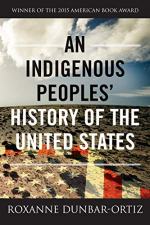
|
| Name: _________________________ | Period: ___________________ |
This test consists of 5 multiple choice questions, 5 short answer questions, and 10 short essay questions.
Multiple Choice Questions
1. The siege of Wounded Knee coincided with the fifth anniversary of which historical event?
(a) The My Lai massacre.
(b) The moon landing.
(c) The Kennedy inauguration.
(d) The end of the Vietnam War.
2. What percentage of the 16,000 Cherokees who were forced onto the Trail of Tears perished on the journey?
(a) 50%.
(b) 30%.
(c) 20%.
(d) 40%.
3. Which term for robbers was often used by white settlers to describe Natives?
(a) Maurauders.
(b) Raiders.
(c) Bandetti.
(d) Corsairs.
4. How does the Dunbar-Ortiz describe the Iraq War?
(a) As a "democratic war."
(b) As a "colonialist war."
(c) As an "Indian war."
(d) As a "settler's war."
5. According to Dunbar-Ortiz, what motivated the U.S. to extend its military power in the Caribbean and Pacific?
(a) The desire to protect and extend corporate wealth.
(b) The desire to fight against communities governments.
(c) The desire to spread democracy across the globe.
(d) The desire to convert other racials to Christianity.
Short Answer Questions
1. What was the name of the priest who was an instrumental part of the Mexican independence movement?
2. Which nationality did Admiral George Dewey refer to as "Indians"?
3. Which person was considered an icon of U.S. settler colonialism?
4. What was the Spanish name for the Indigenous client class?
5. What was Andrew Jackson's background before his presidential run?
Short Essay Questions
1. Who were the Colorado Volunteers?
2. What was the Trail of Broken Treaties?
3. After incarcerating Native people in Fort Sumner, Congress eventually decided to let these individuals return to their homes. What prompted this decision?
4. What was the outcome of the Indian Citizenship Act?
5. What was Benjamin Hawkins' mission as an "Indian agent" for the U.S. government?
6. Following the Civil War, why did the U.S. government frequently assign Black troops to the West?
7. How did Franciscan missionaries in the U.S. treat Native inhabitants?
8. According to Dunbar-Ortiz, what role does alcohol played in colonialization?
9. What was the Roosevelt Corollary?
10. What was the impact of the Pacific Railroad Act on Native people?
|
This section contains 630 words (approx. 3 pages at 300 words per page) |

|




